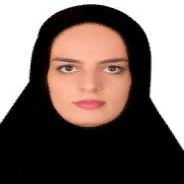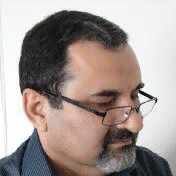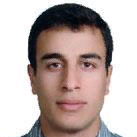International Journal of Engineering and Manufacturing (IJEM)
IJEM Vol. 7, No. 1, 8 Jan. 2017
Cover page and Table of Contents: PDF (size: 902KB)
Dynamic Modeling and H∞ Control of Offshore Wind Turbines
Full Text (PDF, 902KB), PP.10-25
Views: 0 Downloads: 0
Author(s)
Index Terms
Offshore wind turbine, tension leg platform, robust control, H-infinity controller
Abstract
In this paper, vibration control problem in tension leg platform offshore wind turbines is investigated. First a non-linear model of the wind turbine is obtained. Six degrees of freedom are considered in the model including surge, heave and pitch of the platform, tower fore-aft vibrations, rotor rotation and drivetrain torsional vibration. Moreover all external loads acting on the offshore wind turbine such as aerodynamic loads, hydrodynamic loads and mooring line forces are taken into account. To achieve an accurate model of the wind turbine, tower and drivetrain are modelled as flexible components. The model output is compared with FAST simulator; a popular open source software for modeling wind turbines.
Then, a robust controller is designed to regulate rotor speed and output power, increase wind turbine efficiency and attenuate tower fore-aft vibration. The controller is implemented on the non-linear dynamic model to investigate the closed loop performance.
Cite This Paper
Farzaneh Haghjoo, Mohammad Eghtesad, Ehsan Azadi Yazdi,"Dynamic Modeling and H∞ Control of Offshore Wind Turbines", International Journal of Engineering and Manufacturing(IJEM), Vol.7, No.1, pp.10-25, 2017. DOI: 10.5815/ijem.2017.01.02
Reference
[1] P. Pardalos, S. Rebennack, M. V. Pereira, N. A. Iliadis, and V. Pappu, Handbook of Wind Power Systems: Springer, 2014.
[2] Bachynski, E. E., & Moan, T. (2012). Design considerations for tension leg platform wind turbines. Marine Structures, 29(1), 89-114.
[3] Bobanac, V., Jelavić, M., & Perić, N. (2010, September). Linear parameter varying approach to wind turbine control. In Power Electronics and Motion Control Conference (EPE/PEMC), 2010 14th International (pp. T12-60). IEEE.
[4] J. Jonkman and B. Marshal, "FAST User's Guide," Nat.Ren.En.Lab., Golden, CO,USA, Tech.Rep. NREL/TP-500-38230, 2005.
[5] K. H. Lee, "Responses of floating wind turbines to wind and wave excitation," Massachusetts Institute of Technology, 2005.ASME, 2003. ASME Manual MS-4, An ASME Paper, latest ed. The American Society of Mechanical Engineers, New York. See also URL http://www.asme.org/pubs/MS4.html.
[6] E. Wayman, P. Sclavounos, S. Butterfield, J. Jonkman, and W. Musial, "Coupled dynamic modeling of floating wind turbine systems," in Offshore Technology Conference, 2006.
[7] E. N. Wayman, "Coupled dynamics and economic analysis of floating wind turbine systems," Massachusetts Institute of Technology, 2006.
[8] A. R. Henderson and M. H. Patel, "On the modelling of a floating offshore wind turbine," Wind Energy, Vol. 6, pp. 53-86, 2003.
[9] G. R. Fulton, D. J. Malcolm, and E. Moroz, "Design of a semi-submersible platform for a 5MW wind turbine," in Proceedings 44th AIAA/ASME Wind Energy Symposium, Reno NV January, 2006, pp. 9-12.
[10] J. E. Withee, "Fully coupled dynamic analysis of a floating wind turbine system," Monterey, California. Naval Postgraduate School, 2004.
[11] G. Betti, M. Farina, G. A. Guagliardi, A. Marzorati, and R. Scattolini, "Development of a control-oriented model of floating wind turbines," Control Systems Technology, IEEE Transactions on, Vol. 22, pp. 69-82, 2014.
[12] G. Betti, M. Farina, A. Marzorati, R. Scattolini, and G. Guagliardi, "Modeling and control of a floating wind turbine with spar buoy platform," in Energy Conference and Exhibition (ENERGYCON), 2012 IEEE International, 2012, pp. 189-194.
[13] J. M. Jonkman, "Dynamics modeling and loads analysis of an offshore floating wind turbine", ProQuest, 2007.
[14] S. Christiansen, T. Bak, and T. Knudsen, "Damping wind and wave loads on a floating wind turbine," Energies, Vol. 6, pp. 4097-4116, 2013.
[15] M. A. Lackner, "An investigation of variable power collective pitch control for load mitigation of floating offshore wind turbines," Wind Energy, Vol. 16, pp. 519-528, 2013.
[16] M. A. Lackner, "Controlling platform motions and reducing blade loads for floating wind turbines," Wind Engineering, Vol. 33, pp. 541-554, 2009.
[17] E. A. Bossanyi, P. A. Fleming, and A. D. Wright, "Validation of individual pitch control by field tests on two-and three-bladed wind turbines," Control Systems Technology, IEEE Transactions on, Vol. 21, pp. 1067-1078, 2013.
[18] H. Jafarnejadsani and J. Pieper, "Gain-Scheduled ℓ₁-Optimal Control of Variable-Speed--Variable-Pitch Wind Turbines," 2015.
[19] Bossanyi, E. A. (2003). Wind turbine control for load reduction. Wind energy,6(3), 229-244.
[20] Johnson, K. E., Pao, L. Y., Balas, M. J., & Fingersh, L. J. (2006). Control of variable-speed wind turbines: standard and adaptive techniques for maximizing energy capture. Control Systems, IEEE, 26(3), 70-81.
[21] Butterfield, S., Musial, W., & Scott, G. (2009). Definition of a 5-MW reference wind turbine for offshore system development. Golden, CO: National Renewable Energy Laboratory. Bianchi, F. D., De Battista, H., & Mantz, R. J. (2006). Wind turbine control systems: principles, modelling and gain scheduling design. Springer Science & Business Media.
[22] Scherer, C., Gahinet, P., & Chilali, M. (1997). Multiobjective output-feedback control via LMI optimization. IEEE Transactions on automatic control, 42(7), 896-911.


